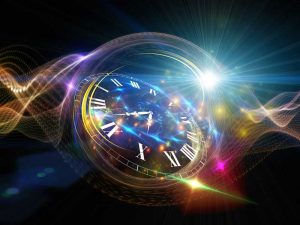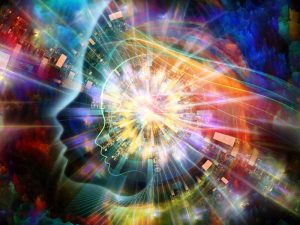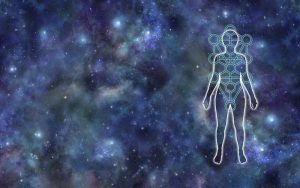Breaking Out of the Box: Transforming the way we Think
In our previous blog titled “Let Your Brain Out of the Box: Identifying the Old Paradigm”, we revealed four basic concepts that form the foundation of our outdated paradigm. The roots of this old paradigm extend back several hundred years to Newtonian physics and Industrial Age thinking.
This old box consists of a mechanistic way of thinking that is based on limited, linear logic and the idea that the material world is all there is.
Even with the new physics revealing a deeper truth and turning all the old paradigm concepts on their heads, and even in our complex, interconnected, and rapidly changing world, most people are still living their lives as though this old paradigm were true.

We are still operating our schools, businesses, relationships with each other, and so many things in this world as if this old paradigm was true. This is how conditioning and indoctrination work.
The old ways of thinking are so programmed in at a deep level, that it takes more than just consciously believing in new concepts to make a real shift into a new way of being.
Instead, it takes purposeful re-patterning and re-programming of our mental, behavioral, and neural wiring. Many people today agree that it is time to re-think our worldview and how we do things, yet most are uncertain of how to do that.
What kind of alternative structure can we adapt to help us make sense of the world in the 21st century and learn to thrive in it?
 At Quantum Leap Alchemy, we know that a powerfully rich and deeply true alternative already exists, and
At Quantum Leap Alchemy, we know that a powerfully rich and deeply true alternative already exists, and
it is based on both the new sciences, such as quantum physics, epigenetics, and neuroscience, as well as on ancient wisdom that has stood the test of time and aligns perfectly with the new science. Re-patterning our mental framework and neural wiring to align with this new paradigm is what we specialize in helping people accomplish.
Before we go into the framework of the new paradigm, let’s take one last look at the old paradigm and get clear about why it is no longer working for us.
So what exactly are the problems with the old paradigm of Industrial Age and Newtonian thinking?
Reductionism:
The problem with reductionism is that it completely ignores the synergy that happens when two or more things interact.
Systems theory today is saying that it is actually the interaction between the parts that is more crucial than the individual actions of the parts themselves.
Through interaction, information is exchanged and feeds back into the system, allowing for parts to respond to that information, self-organize and then synchronize. This causes a new pattern to emerge, that comes from the complex interactions themselves, and results in a whole greater than the sum of its parts.
In the new science, Interactivity is Key, thus making reductionism obsolete.
Determinism:

The problem with the concept of determinism is that it promotes the idea that coinciding events are just that, a meaningless “coincidence”. Or on the other extreme it leaves some to believe that everything is due to “fate” or even worse, that we don’t have a choice in how things play out.
Determinism essentially takes away free will.
The new science says that, rather than things being pre-determined, there is an uncertainty inherent in nature. This uncertainty is precisely what provides room for us to consciously participate in creating the outcome.
Separatism:
This idea of separatism says that you are separate from everything else.
It leads us to feel fear and constantly be driven to do or achieve more. When combined with interpretations of Darwin’s “survival of the fittest”, this concept has ingrained in us an ethos of competition and fear that only the “fittest” will survive. This fear-driven mentality leads further to making us think that we need something outside of ourselves to be whole or more connected, and therefore “secure”. This is a huge problem that we must move beyond.
Fortunately, with the emergence of internet and social media we are beginning to consciously let go of this notion. Even still, however, when it comes to our subconscious filters and reactions, we tend to believe ourselves to be separate from others. Even while things continue to become more interconnected in our world, when it comes to our personal relationships, we are still reacting as if we are separate.
The new science says that not only are we not separate, we are intimately connected to everything and everyone we have ever observed or interacted with.
Structures built upon a practice or policy of separation, isolation, or compartmentalization are faulty systems of the old paradigm that can no longer be sustained in our world today. Thus, it is time to let go of this illusion.
Realism:
The concept of realism is a very materially-based view of the world, and it teaches us to only value or believe in what is “Real”, meaning tangible and measurable.
Realism says that the qualities for success are going to be objectivity, realistic thinking, and what you can gain at a materialistic level.
Clearly the problem with this principle is that it lends itself to greed as a primary value base, and leads to a disregard for anything that is more soul-based or non-physical.
 The new science again turns this principle on its head and says that the only things we can call, with any degree of certainty, as “real” are the things we observe in the moment.
The new science again turns this principle on its head and says that the only things we can call, with any degree of certainty, as “real” are the things we observe in the moment.
The things of the past that we thought of as “real” no longer exist (and might never have existed, save for our memory’s interpretation of them), and the things we think of as “real” now, might not be so in a future moment. Even that which we think of as “real things” are not as solid and permanent as we once thought. Instead, they are merely forms of energy constantly in flux. Unfortunately, even though these old paradigm concepts have been shown to be fundamentally false, and the concepts from quantum physics have been known since the 1920’s, we still seem stuck in the old paradigm ways.
So how do we break free from this?
The next steps in the transformational process are to dissolve away the old forms and to then identify what is true from what is false.
Then, once we are clear on what is of essence and true in nature, we can then put the pieces back together again to form a new vision, or a new paradigm.
